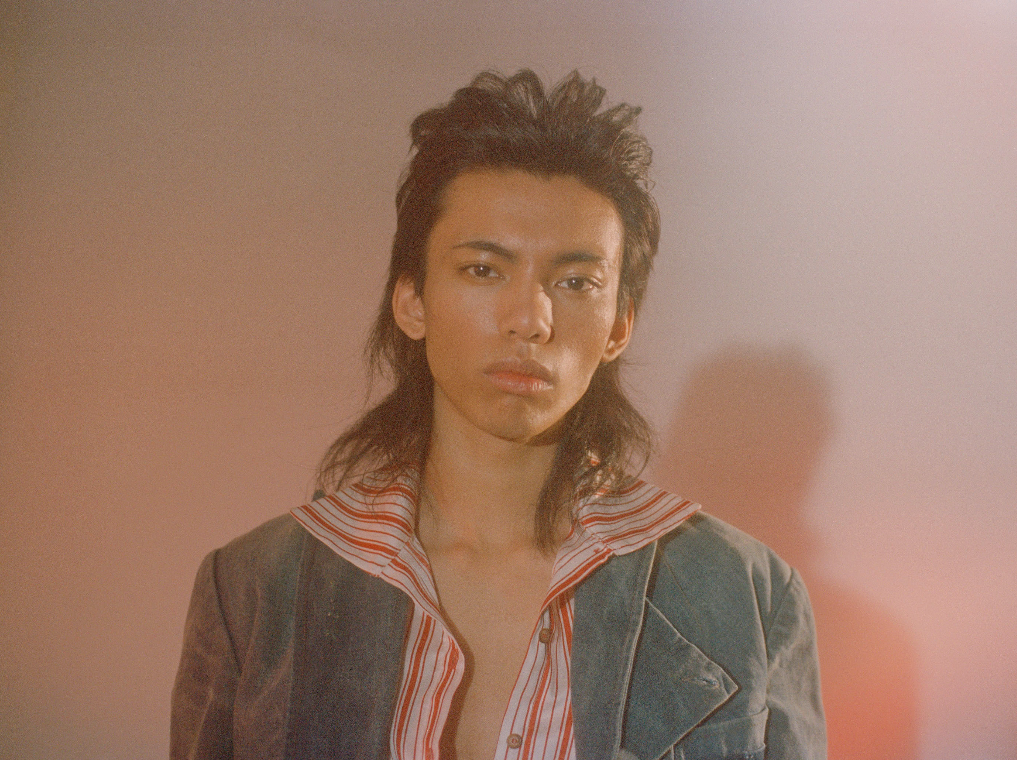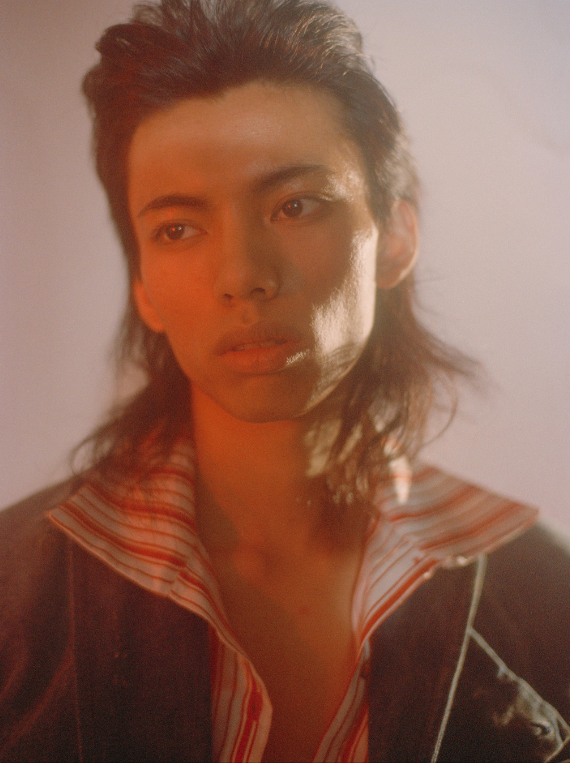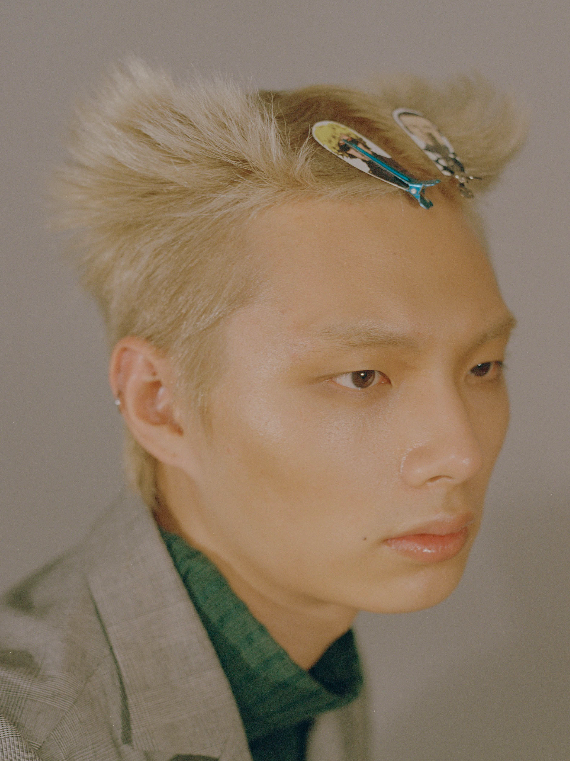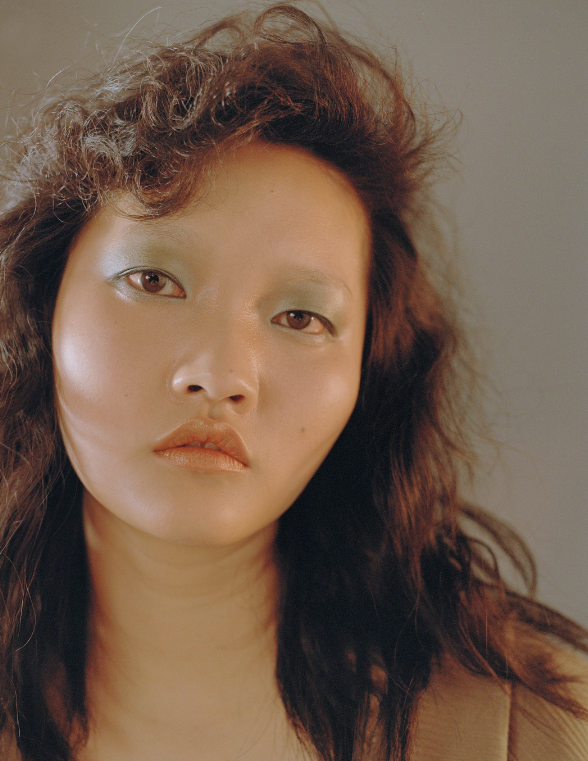Discussing fashion, Orientalism and cultural appropriation
“I love 18th century French chinoiserie, because it is an idea of China painted by people who never saw China. That is amusing, because there is real imagination. […] I also enjoy having non-Chinese playing Chinese […]. It is amusing. The influence and spirit of China provide inspiration, which must be developed. […] Sometimes the idea of things is more creative than reality.” (Karl Lagerfeld, Chanel Paris Shanghai #12 The Interview, 2010)
It was December 2009 and Karl Lagerfeld had just presented the Chanel Paris-Shanghai Métiers d’Art Collection in Shanghai, opening the show with a short film featuring Caucasian actors in yellowface. In the 21st century, the idea of dressing up Caucasian models to play Chinese characters might seem preposterous, but the reality is, the practice is not going anywhere. In its latest manifestation, yellowface is staring at us from the pages of American Vogue’s ‘Diversity Issue’ (March 2017), where Caucasian model Karlie Kloss plays the role of a geisha. The shoot, by Mikael Jansson, includes face powder, black wigs and a sumo wrestler used as a prop. Online, controversy quickly ensued. Twitter user Suzanne Enzerink wrote, “Has Vogue lost it? Karlie Kloss as a geisha. ‘What look should we go for this March?’ ‘How about yellowface and assorted Orientalism?’” After Kloss publicly apologised, another user, Andri, replied to her, tweeting “I guarantee you 99.99% of the people pretending to be offended here are American.”
“Using century-old stereotypes and flattening representations of Asia as inspiration is not only culturally insensitive and borderline racist, it is lazy thinking.”
Creative Freedom and Political Correctness
In the past few years, as people have become more vocal about issues concerning race, gender and cultural appropriation in popular culture, another – opposite but related – trend has got a foothold in the general discourse: intolerance against political correctness. For some, a Caucasian model dressed up as a geisha in Vogue is a clear symbol of the extent to which Orientalism still pervades mainstream culture; for others, raising this issue is just another example of the excessive policing of creative expression promoted by white-guilt-riddled people.
When the discourse includes fashion, reactions are particularly ambivalent. Yo Zushi, a contributing writer for the New Statesman, recently wrote, “Fashion speaks in the language of fantasy and its vocabulary is therefore necessarily full of stereotypes and clichés. Its function, whether through clothes or photography or illustration, is to amplify our vague daydreams and to excite us. We can’t impose rational or moral rules on our dreams – and likewise on fashion.” It’s a way of thinking that resonates with what Marc Jacobs said in response to the dreadlock controversy caused by his Spring 2017 collection. “I wholeheartedly believe in freedom of speech and freedom to express oneself through art, clothes, words, hair, music…EVERYTHING,” said the designer through his Instagram account.
If cultural appropriation and fashion were on Facebook, their relationship status would be “it’s complicated.” For every person outraged by Marc Jacobs sending white models wearing dreadlocks down the catwalk or Valentino using cornrows, there is someone who finds attempts to limit the freedom of wearing a certain hairstyle or item of clothing based on a person’s skin colour problematic.
Depending on where you stand, Western designers taking inspiration from traditional Asian clothing or motifs can be seen as participating to the mindless dynamics of cultural appropriation, or as expressing genuine appreciation for a different culture through emulation. In this ambivalent landscape, is there a middle ground between dismissing cultural appropriation and over-policing creativity?
Appropriate Cultural Appropriation?
“When talking of design, it’s difficult to say what is the right way of doing cultural appropriation,” says London-based fashion designer Robert Wun. “When a designer from a Western cultural background uses what he thinks as Eastern-inspired elements [in his work], I don’t see that as problem. But if you’re doing a collection inspired by Oriental elements, why there are so many white girls but not enough Asian models on the catwalk? In respect of what you are inspired by, you should be aware of what is actually going on in the world. For example, there is not enough diversity [in the fashion world]. I think it is completely fine if your designs are inspired by Oriental culture or have Oriental elements, as long as you are also using Asian models.”
“If you’re doing something inspired by a particular culture, you also need to be aware of what’s going on in society. You can’t just simply ignore what is going on and say, ‘I think that it looks better on white girls. That’s my way of interpreting it.’” – Robert Wun
Wun is pointing out one undeniable fact: fashion might speak the language of fantasy, but the people who speak this language and listen to it – makers and consumers – are still living in a historical context. Fashion is commonly understood not as a mere form of ornamentation or protection, but as a way to express meaning and, as such, it can be read as a social, cultural and political act itself. Approaching fashion design as pure creation, existing in a land of suspended judgement located outside history, it’s tempting. However, what designers decide to engage with, the way they decide to present their creations and the way these will be received, are still informed – and inseparable from – very concrete political, social and historical issues.
As Wun highlights, lack of diversity is one of them. According to reports compiled by The Fashion Spot, the Spring 2017 season saw only 25.4 percent of non-white models walking the shows between New York, London, Paris and Milan; in 2016, on a sample of 679 cover model appearances from 48 international fashion publications, only 29 percent of cover models were non-white. Despite these numbers, 2016 was the most diverse and inclusive year yet.
“If you’re doing something inspired by a particular culture, you also need to be aware of what’s going on in society. You can’t just simply ignore what is going on and say, ‘I think that it looks better on white girls. That’s my way of interpreting it, ’” continues the designer. In the same way, casting fashion editorials that perpetuate harmful stereotypes and Orientalist interpretations of ‘Asianess’ under the light of positive emulation can be difficult. What is being referenced is not the culture itself, but an idea of that culture that was fabricated by the dominant Western discourse in the past.
“It is insane to me that this editorial could pass through multiple people at the publication without someone calling out how problematic it was,” adds Kathleen Tso, co-founder of independent magazine Banana, talking of Vogue’s geisha-inspired editorial. “In this particular example, it was so obvious that there was no effort to actually understand the culture that was being portrayed (let alone, they didn’t even have the thought to cast an actual Japanese model).”
“I think it’s okay to be inspired by the East in art and design. I can’t blame anyone for being inspired, there’s centuries of beautiful history and design to be inspired by. It’s the intention behind the inspiration that decidedly crosses the line or not.” – Kathleen Tso
Appreciating and paying homage to a culture calls for engagement on a deeper level, going beyond simple and reductive aestheticism. Using century-old stereotypes and flattening representations of Asia as inspiration is not only culturally insensitive and borderline racist, it is lazy thinking. Being aware of the social, political and historical context of where a creative product is going to be experienced doesn’t correspond with limiting freedom of expression or over-policing creativity. It’s a demand for responsibility, awareness and respect towards the culture and the people this inspiration is taken from. “I think it’s okay to be inspired by the East in art and design,” continues Tso. “I can’t blame anyone for being inspired, there’s centuries of beautiful history and design to be inspired by. It’s the intention behind the inspiration that decidedly crosses the line or not.”
Fantasy vs. Historical Reality
“Most of a designer’s inspirations are fantasies,” says Serge Carreira, a fashion industry veteran and lecturer at Paris’ Sciences Po institute. “Designers work on symbols and on pictures. They interpret an Occidental vision of the Oriental world. What make them interesting is when they are able to understand and adapt them to our times. A fantasy can be a way to promote a culture; it is not an offense if it respects its spirit. Exoticism is always a kind of ethnocentrism. But international brands and designers should go beyond a narrow and burlesque vision of China. They should be able to capture what makes Chinese or Asian culture today.”
This would mean approaching China – or any other country – as a real, complex and contemporary entity, taking into consideration the power structures that have defined so much of the West-East relations in the past. When Lagerfeld says, “Sometimes the idea of things is more creative than reality,” he adds to a discourse that assumes that the Western idea of China, fabricated in a time of Western cultural, political and military supremacy, is still as of today more creative, more worth exploring, than the real, historical and contemporary China.
“Most of a designer’s inspirations are fantasies. Designers work on symbols and on pictures. They interpret an Occidental vision of the Oriental world. What make them interesting is when they are able to understand and adapt them to our times.” – Serge Carreira
This way of thinking is an easier way to approach another culture because, in pure Orientalist style, it reduces the said country to a flattened, smooth and harmless Other that can be sold to and consumed by an audience still perceived as mainly white and Western. This “invented yet racialized style”, as it has been defined by Niessen, Leshkowich and Jones in Re-orienting Fashion, feels comfortable because it doesn’t require any kind of cultural, mental or personal effort of understanding and involvement. Hiding behind the idea of respecting freedom of creativity is just a way to sway attention from the real issue, which is not taking inspiration from other countries, but on what level and how you decide to engage with a certain culture when doing so.
“Western creatives will always be fascinated with Orientalism because it is completely different from what they experience,” continues Tso. “This won’t go away. However, they may not realize when they cross the line because of sheer ignorance. And although there should be some self-education about what is appropriate and not, as a community we need to be more vocal about these issues to flag the problem and educate. What we, as an Asian community, could do is take matters into our own hands. Present our culture in the way we want and be vocal when we see problematic representations.”
In 2015, actress Amandla Stenberg gave resonance to a question she had been seeing on social media through her viral video on cultural appropriation, Don’t Cash Crop on my Cornrows. “What would America be like if we loved black people as much as we love black culture?” she asked. We could also ask, what would the fashion industry be like if its members finally started to engage in a meaningful, understanding and mutual conversation with other cultures instead of keep referencing the same old, Western-fabricated topos?
—
The photographic essay in these pages was created by Yun Nam Ho and Annie Lai, inspired by two attitudes typical of Orientalism – xenophobia and xenophilia. In the story, each model adopts an unexpected approach to reinterpret stereotypes traditionally associated with Asia.
“Western people tend to have stereotypes of Asian personalities and apparel,” explains Yun Nam. “However, we are no longer trying to be what we are expected to be. We have our own way to be ourselves.”








